
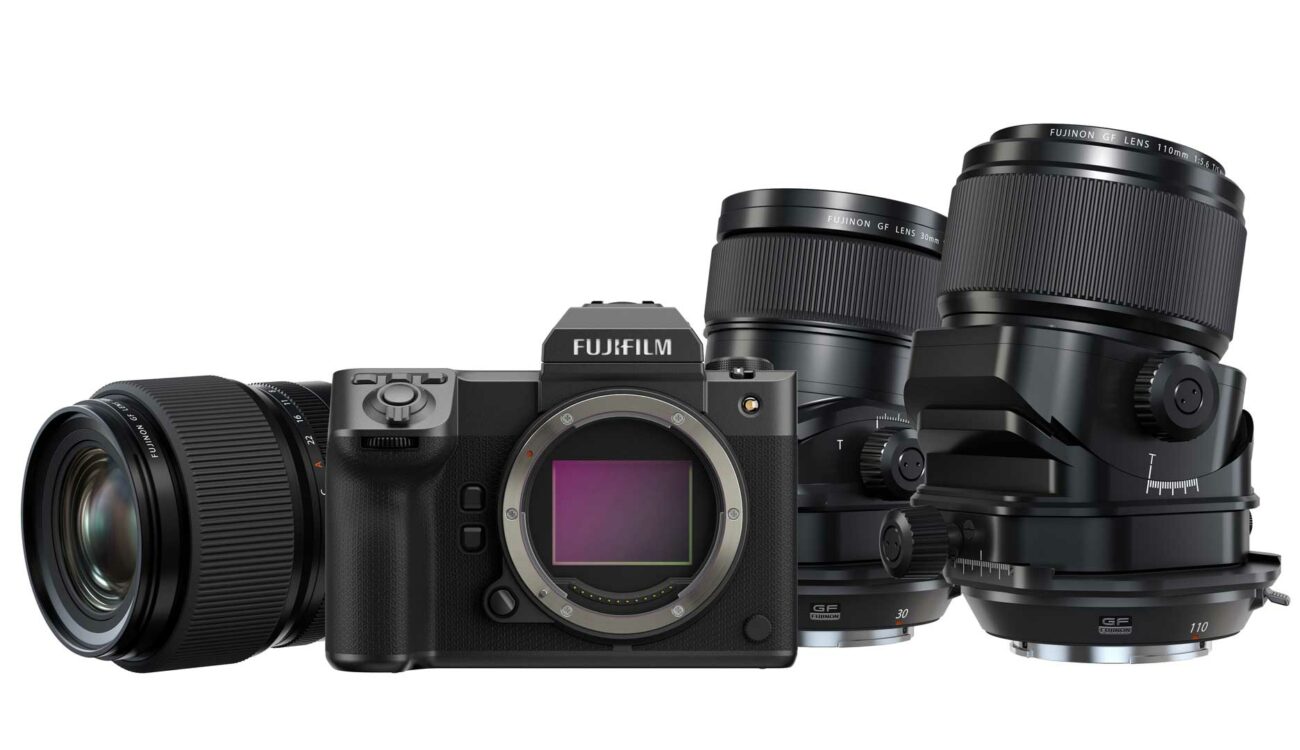
Since its beginning, FUJIFILM’s medium format GFX system was set to challenge everything we were taught about medium format. FUJIFILM’s recent announcements are another big step, if not a leap, in the same direction: Challenging the paradigm stating quality and speed cannot go hand in hand. Furthermore, this system poses true competition to mainstream cameras in fields and features never before considered possible for medium format gear. Let’s have a look!
FUJIKINA 2023 (Stockholm) – what was announced
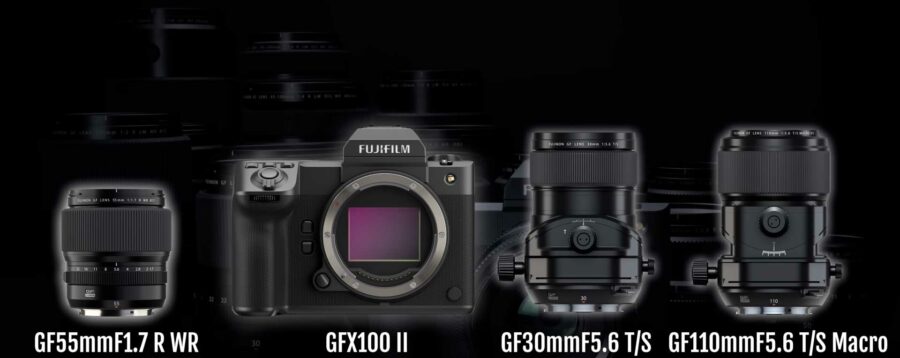
The FUJIFILM GFX 100 II got most of the attention, and justly so. It’s an impressive and even groundbreaking digital camera, incorporating a high-end auto-focus system and various professional video features into a high-resolution medium format camera.
FUJIFILM also announced three new lenses – two tilt-shift lenses and a fast normal lens: the FUJIFILM GF 110mm f/5.6 T/S Macro lens, the FUJIFILM GF 30mm f/5.6 T/S lens, and the FUJIFILM GF 55mm f/1.7R WR. Each is impressive on its own, but when looking at the system as a whole an interesting picture emerges. A medium format system capable of extreme image quality, fast burst rates, reliable autofocus system, and professional-level video output. Let’s take the longer road through recent history and understand the context and importance of the GFX system as it stands today
What is “medium format”?
“Medium format” is a general term, traditionally given to any film size between 35mm (24x36mm) and large format (4×5 inch and larger). There might be some exceptions but most medium format cameras take either 120 or 220 film rolls. Various form factors and use cases created a variety of sensory areas, starting at the smallest and probably most common 645. The 645 format (6cm x 4.5cm) was widely adopted by professionals and some hobbyists. Substantially larger than 35mm, it offered unparalleled image quality. Being more compact than other medium formats meant much more nimble cameras, and an experience closer to 35mm that actually included autofocus on some models.
Larger medium formats were the classic 6×6 of Hasselblad, Rolliflex, and others such as the rather popular 6×7 format used by the venerable Pentax 67 SLR, or some MF rangefinders such as the Plaubel Makina or the recently discontinued FUJIFILM GF670. Some cameras went all the way to 6×8 or 6×9, and panoramic cameras would provide 6×12 and even 6×17, though they are sometimes considered large format cameras.
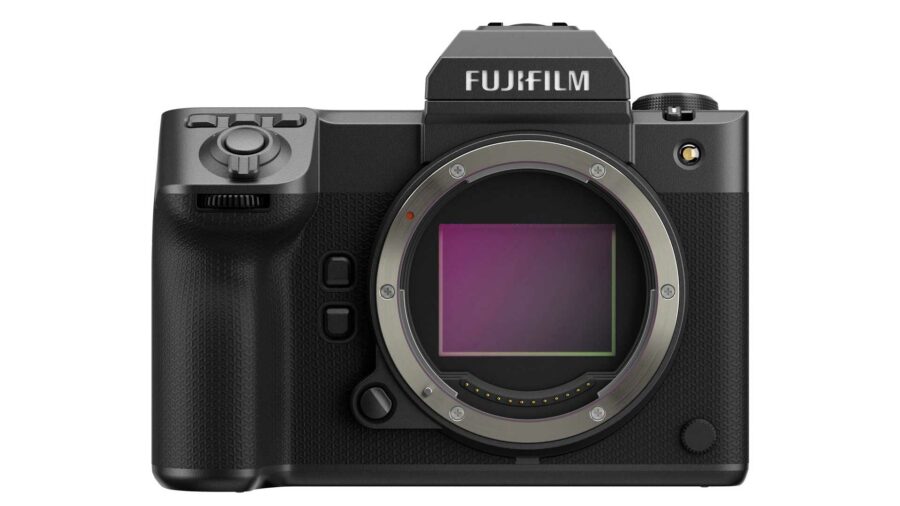
One common trait
All the different medium formats share one common trait throughout. They all sacrifice speed for image quality. This comes in both general operational speed and the number of frames provided by the constant length of the 120mm film. The fastest cameras were the 645 SLRs from CONTAX, Mamiya, and PENTAX. None were nearly as fast as any 35mm SLR but they all had motorized film advance, autofocus, and auto exposure. When taking 645 images, a 120mm roll will provide up to 16 exposures. This number will gradually decrease as frame size increases. A 6×17 camera will take no more than 4 exposures on a single roll. The larger the sensory area, the slower the camera gets.
One maker to rule them all – FUJIFILM GFX
Many manufacturers took part in the medium format industry. BRONICA, Rolliflex, CONTAX, Mamiya, Hasselblad, PENTAX and others. Most of those specialized in one, two, and sometimes three specific frame sizes. FUJIFILM took a different approach. The company covered almost every format, from 645 compact rangefinders via a modular technical 6×8 system, fixed-lens 6×7, 6×8, and 6×9 rangefinders, all the way up to 6×17 beasts. Fuji made them all, creating a vast lineup and amassing extensive experience. This experience came in handy as the digital revolution swept the industry.
Digital medium format
The digital revolution didn’t swipe through the medium format market as swiftly (and violently) as it did the smaller formats. Sensor prices soared exponentially as sensor size grew, and digital medium format gear was prohibitively expensive. High sensor prices also made the sensors significantly smaller than film-based systems, and processing limitations made the digital backs huge, slow, and loud (fan-based cooling). Some of them had to connect to an external hard drive (HDD), and for all that effort and money one would get significantly sub-par results compared to scanned film.
The change began as the industry progressed, pioneered by PENTAX, which was the first manufacturer to output a sub-10,000 camera. The PENTAX 645D was announced at Photokina in 2010. Boasting a 40-megapixel CCD 44mm x 33mm sensor, encased in a modern DSLR body, it was a revolutionary product. Its successor, the 645z, was probably the first video-capable medium format camera and used the first CMOS MF sensor. Fun fact – this sensor is still used today in the Hasselblad 907X and the FUJIFILM GFX 50sII, one of the longest-serving sensors across the industry.
Dare to compete
Though medium format sensors come in various shapes and sizes (The largest commercially available sensors go up to 53.9mm x 40.4mm. The ARRI ALEXA 65 sensor is 54.12mm x 25.58mm), it seems the smaller 44mm x 33mm strikes a good bargain. Significantly larger than a 35mm full-frame, it provides better image quality. Significantly smaller than the largest medium format sensors, it’s much more affordable and gains additional mass-market advantages. So when FUJIFILM decided to create the GFX system, they put this sensor at its heart. This decision is among the main reasons that enable actual competition between the GFX system and full-frame cameras. Slowly but surely, FUJIFILM managed to lower the price point while incorporating more and more features sourced from its APS-C X-system. All this research, development, knowledge, and experience has accumulated into a peak product – the FUJIFILM GFX 100 II. Though its older siblings (GFX 100 and GFX 100s) took a giant leap, being the company’s first 10-bit 4K enabled medium format cameras, the new iteration is a game changer.
A great camera is not enough
The professional still market is almost entirely based on 35mm full-frame systems. The same is true, though to a lesser extent, in the hybrid market. Competing against such well-rounded systems requires more than a great camera. It requires a system. FUJIFILM’s latest announcement included three lenses representing fundamental pieces of the professional system’s puzzle.
Wide tilt-shift
Tilt-shift lenses are somewhat niche products but are essential in specific fields, namely architecture. Such lenses enable the maintenance of straight lines when looking up, down, or sideways thanks to their shift mechanism, enabling perspective correction on the optical level (as opposed to post-process and its degrading effect over the image). Though full-frame tilt-shift lenses may fit the FUJIFILM GFX system, they provide a much tighter image circle and won’t allow extreme tilts or shifts. Since those lenses aren’t made for such large sensors, it’ll be hard to determine the exact point where the image starts to deteriorate. Hence the new FUJIFILM GF 30mm f/5.6 T/S is by far the better option, though at a certain cost ($3999).
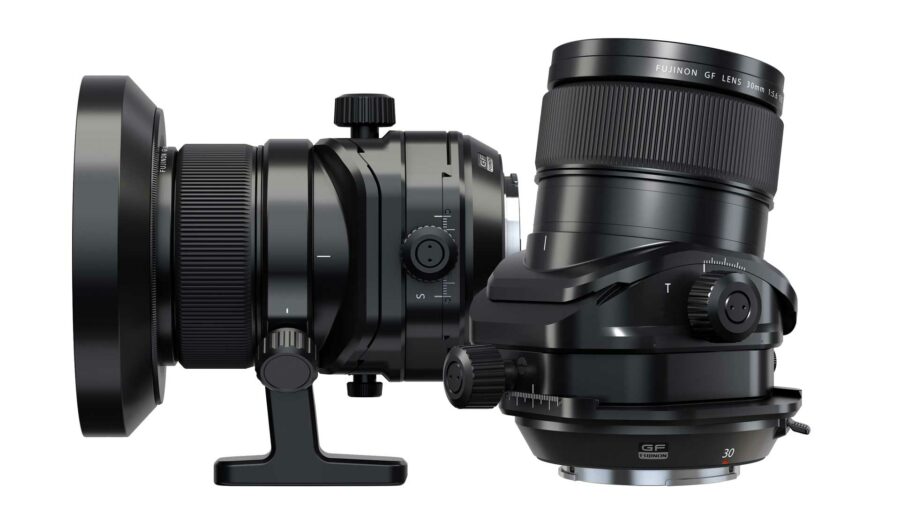
Tele-macro tilt-shift
The FUJIFILM GFX system boasts one of the best sensors available in its price range. Such a feature makes it more than suitable for various technical photography scenarios. These include precise macro, cultural heritage conservation, art reproduction, etc. The precise control over the focal plane provided by the tilt mechanism provides the FUJIFILM GF 110mm f/5.6 T/S Macro with some unique abilities regarding depth of field. Tilting the lens tilts the focal plane so objects at different distances may both be in focus without the use of extremely narrow aperture settings, canceling the diffraction effect and maintaining the best optical quality.
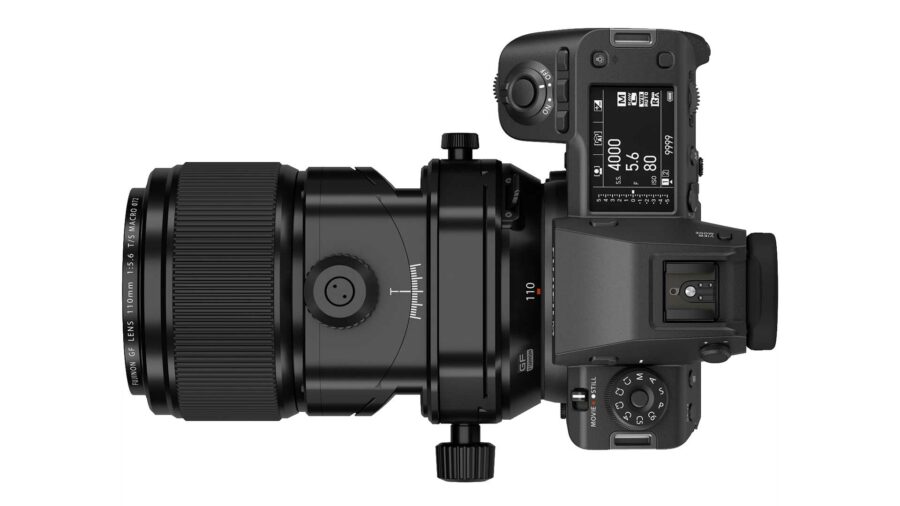
Fast normal lens
A fast normal lens is the cornerstone of every system. At launch the FUJIFILM GFX system had one – the FUJIFILM GF 63mm f/2.8 R WR. But as time passed, the 2.8 aperture got a bit long in the tooth. Everybody knows that medium format gets a shallower depth of field at a given aperture, but since the sensor has a “crop factor” of 0.7, the equivalent aperture in terms of full frame is f2.2. That’s not bad in any way, but a system needs some more “punch” to pit itself against the best.
Enter the FUJIFILM GF 55mm f/1.7R WR, the fastest normal medium format lens ever, trading blows with legends like Mamiya’s 80 f1.9 and CONTAX’s ZEISS 80 f2.0 (both for 645). At 55mm, this is a “true” normal. The focal length is equal to the diagonal length of the sensor. In full-frame terms, it’s comparable to about 43mm f1.4. In my personal opinion, this is the single most important lens in the FUJIFILM GFX lineup, but that’s a personal preference, heavily dependent upon use cases and personal workflow.
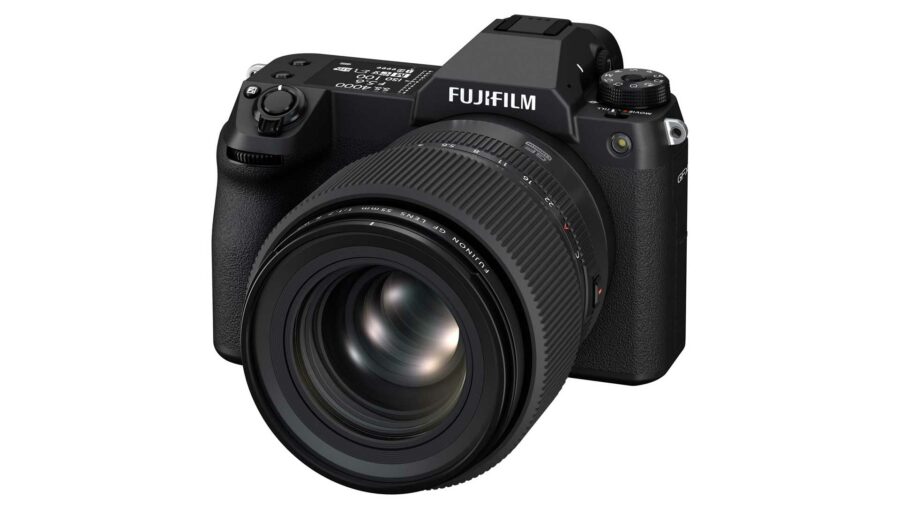
Complete lineup?
This lens trio and the GFX100 II, alongside existing GF lenses and camera bodies, represent a leap towards a complete camera system capable of high performance in various fields and use cases. Also not unimportant is that now the system is also capable of decent performance in even more situations. Only a few years ago no one would consider a medium format system as an action kit, or as an adequate tool for wildlife scenarios. Though the GFX100 and GFX100s made some impressive progress regarding video, the GFX100 II takes it to a whole other level. ProRes, 8K, anamorphic support, and more – things that were unheard of are now a reality for GFX users. The new lenses cover a gap that pushed GFX users (including yours truly) to some funky lens adaptations. Furthermore, FUJIFILM promises an extreme telephoto (500mm f5.6) later in 2024 for their FUJIFILM GFX and is researching a future servo-zoom cine lens for the mount. Interesting days ahead…
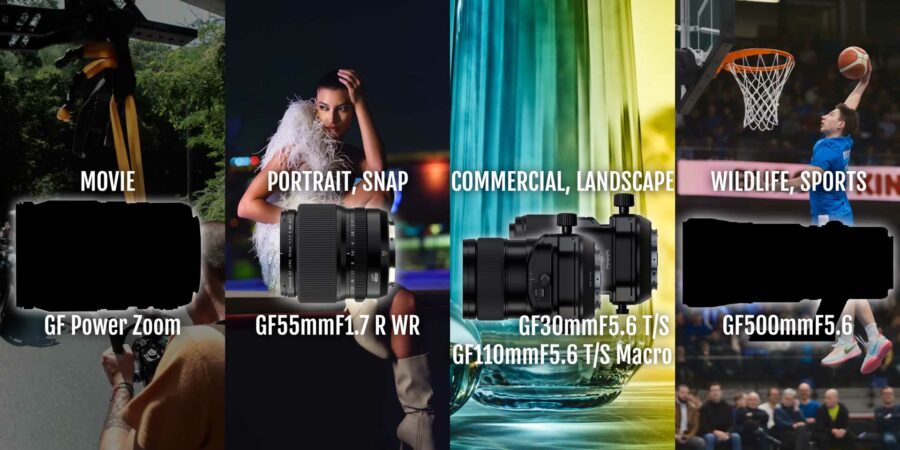
Do you see yourself using the FUJIFILM medium format GFX system as a professional tool for cinematography? Action? Wildlife? Have recent updates to the lineup changed your mind about the system? Let us know in the comments!






